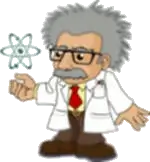Four-digit 10261
Roman likes magic and math. Last time he conjured three- or four-digit numbers like this:
• created two new numbers from the given number by dividing it between digits in the place of hundreds and tens (e.g., from the number 581, he would get 5 and 81),
• added the new numbers and wrote down the result (in the example given, he would get 86),
• subtracted the smaller ones from the larger of the new numbers and wrote the result after the previous sum, thus conjuring the resulting number (in the example given, he would get 8676).
Which numbers could Roman conjure
a) 171,
b) 1513? Specify all options.
What is the largest number we can conjure in this way, and from which numbers can it arise? Identify all
• created two new numbers from the given number by dividing it between digits in the place of hundreds and tens (e.g., from the number 581, he would get 5 and 81),
• added the new numbers and wrote down the result (in the example given, he would get 86),
• subtracted the smaller ones from the larger of the new numbers and wrote the result after the previous sum, thus conjuring the resulting number (in the example given, he would get 8676).
Which numbers could Roman conjure
a) 171,
b) 1513? Specify all options.
What is the largest number we can conjure in this way, and from which numbers can it arise? Identify all
Final Answer:

You need to know the following knowledge to solve this word math problem:
algebraarithmeticbasic operations and conceptsnumbersthemes, topicsGrade of the word problem
Related math problems and questions:
- A five-digit
 A five-digit odd number has the sum of all digits (digits) five and contains two zeros. If we move each digit in the number one place to the left and move the first digit to the last place, we get a number 20,988 smaller. Find this unknown five-digit numb
A five-digit odd number has the sum of all digits (digits) five and contains two zeros. If we move each digit in the number one place to the left and move the first digit to the last place, we get a number 20,988 smaller. Find this unknown five-digit numb - Digits
 How many odd four-digit numbers can we create from digits 0, 3, 5, 6, and 7? (a) the figures may be repeated (b) the digits may not be repeated
How many odd four-digit numbers can we create from digits 0, 3, 5, 6, and 7? (a) the figures may be repeated (b) the digits may not be repeated - Math test
 Students wrote a math test. The average number of points obtained by them was 64. Another student wrote this test for 80 points. If the teacher added his result to the original ones, the total average of all students would be 65. How many students origina
Students wrote a math test. The average number of points obtained by them was 64. Another student wrote this test for 80 points. If the teacher added his result to the original ones, the total average of all students would be 65. How many students origina - Single-digit 7302
 Four different digits were on the four cards, one of which was zero. Vojta composed the largest four-digit number from the cards, and Martin the smallest four-digit number. Adam wrote the difference between Vojtov's and Martin's numbers on the board. Then
Four different digits were on the four cards, one of which was zero. Vojta composed the largest four-digit number from the cards, and Martin the smallest four-digit number. Adam wrote the difference between Vojtov's and Martin's numbers on the board. Then - Natural numbers
 Find the number of all natural numbers greater than 200 in which the digits 1, 2, 4, 6, 8 occur at most once and not contains any other digits.
Find the number of all natural numbers greater than 200 in which the digits 1, 2, 4, 6, 8 occur at most once and not contains any other digits. - SKMO
 Petra had written natural numbers from 1 to 9. She added two of these numbers, deleted them, and wrote the resulting sum instead of the summaries. She thus had eight numbers written down, which she managed to divide into two groups with the same product.
Petra had written natural numbers from 1 to 9. She added two of these numbers, deleted them, and wrote the resulting sum instead of the summaries. She thus had eight numbers written down, which she managed to divide into two groups with the same product. - Characteristics 65294
 Kuba wrote down a four-digit number, two evens, and two odds. If he crossed out both even digits in that number, he would get a number four times smaller than if he crossed out both odd digits in the same number. What is the most significant number with t
Kuba wrote down a four-digit number, two evens, and two odds. If he crossed out both even digits in that number, he would get a number four times smaller than if he crossed out both odd digits in the same number. What is the most significant number with t
